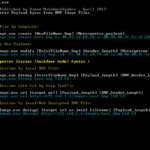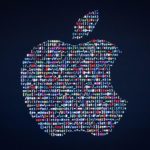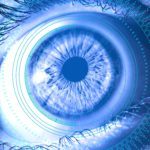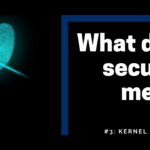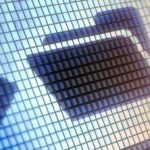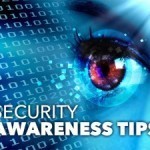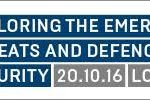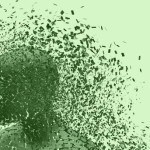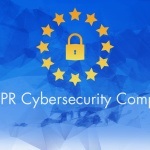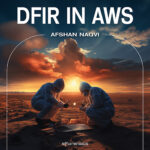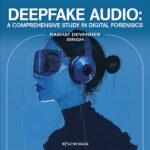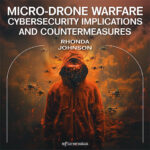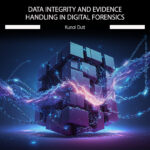No products in the cart.
Android tools | by Shivam Kumar Jha
Android tools by Shivam Kumar Jha Collection of scripts to help with Android ROM stuff. Setup: chmod +x setup.sh sudo …
Attack-Surface-Framework - Tool To Discover External And Internal Network Attack Surface | by ZION3R
Attack-Surface-Framework - Tool To Discover External And Internal Network Attack Surface by ZION3R ASF aims to protect organizations acting as …
Be Careful with CompletableFuture.applyToEither and Exceptions | by Grzegorz Piwowarek
Be Careful with CompletableFuture.applyToEither and Exceptions by Grzegorz Piwowarek In this article, we’ll revisit the CompletableFuture.applyToEither method and try to …
What does security mean #3: What does security mean for your Linux kernel? | by Roland Gharfine
What does security mean #3: What does security mean for your Linux kernel? by Roland Gharfine “I have a plan …

Transferring Backdoor Payloads with BMP Image Pixels | By Damon Mohammadbagher
Transferring Backdoor Payloads with BMP Image Pixels In this article, I want to talk about BMP files and how you …
Android tools | by Shivam Kumar Jha
Android tools by Shivam Kumar Jha Collection of scripts to help with Android ROM stuff. Setup: chmod +x setup.sh sudo …
IOS 1-DAY HUNTING: UNCOVERING AND EXPLOITING CVE-2020-27950 KERNEL MEMORY LEAK
IOS 1-DAY HUNTING: UNCOVERING AND EXPLOITING CVE-2020-27950 KERNEL MEMORY LEAK by Fabien Perigaud Back in the beginning of November, Project …
CRYPTO & DATA ERASURE: After forensic analysis drives should be securely wiped | By Paul Katzoff
| sponsored post | CRYPTO & DATA ERASURE: After forensic analysis drives should be securely wiped Executive Summary Disk encryption …
Cyberconfusion: Cyber Security, Cyber-Security or Cybersecurity? by Dr. Shem
Picture: Daily Tech So which is it: Cyber Security, Cyber-Security or Cybersecurity? Is this the next reincarnation of datacentre vs. …
What does security mean #3: What does security mean for your Linux kernel? | by Roland Gharfine
What does security mean #3: What does security mean for your Linux kernel? by Roland Gharfine “I have a plan …
Attack-Surface-Framework - Tool To Discover External And Internal Network Attack Surface | by ZION3R
Attack-Surface-Framework - Tool To Discover External And Internal Network Attack Surface by ZION3R ASF aims to protect organizations acting as …
Data Quality and Quantity – How to Get the Best of Both Worlds, Part 1 | By Heather Mahalik
Data Quality and Quantity – How to Get the Best of Both Worlds, Part 1 Do Other Tools Really Parse …
Throwing Down The Cyber Security Gauntlet by Stuart Peck
“George Osborne recently announced that he plans to invest £1.9 billion in Cyber Security (which will increase the government's spending to a …
Be Careful with CompletableFuture.applyToEither and Exceptions | by Grzegorz Piwowarek
Be Careful with CompletableFuture.applyToEither and Exceptions by Grzegorz Piwowarek In this article, we’ll revisit the CompletableFuture.applyToEither method and try to …
5 Security Awareness Tips to Keep You Safe by Daniel Brecht
Source of the image: Inter State Security Corp Are you worried about cyber security? Everyone, from home users and small businesses …
How Domain Monitoring Services Can Help Enhance Network Defense Strategies | By Jonathan Zhang
| sponsored post | How Domain Monitoring Services Can Help Enhance Network Defense Strategies As cyber threats continue to advance …
How Cybercriminals Use COVID-19 Panic to Infect and Scam Users | By Dominique René
How Cybercriminals Use COVID-19 Panic to Infect and Scam Users The dreadful coronavirus is taking the world by storm, and …
Wired Security - discount for eForensics readers!
WIRED Security (20 October 2016) is a new one-day event, which will gather more than 20 industry-leading Main Stage speakers, plus an …
Cybersecurity: “The First Step Is to Know Where You Stand” - Interview with Doug Clare, VP for cyber security solutions at FICO
Today we would like to invite you to read our interview with Doug Clare, VP for cyber security solutions at FICO. …
The Three Lenses of a Cyber Economist by Sheldon Shaw
The cyber economist views the IT security landscape through three lenses; societal, intellectual and technical. At once these collide and …
All along the cyber attack continuum - Detecting cyberattacks earlier, by Sheldon Shaw from SAS
Many organizations use analytics as an integral part of their businesses operations — to proactively uncover hidden meaning behind customer …
EU GDPR Compliance - Explained Visually by Barricade.io
Source: Barricade.io
Tackling the Challenges of a Mobile, Digitally-Driven World with Advanced Mobile Device Forensics
Five Emerging Challenges in Mobile Device Forensics Law enforcement agencies and enterprises are struggling with too many devices, too many …
Interview with Kunal Dutt
In myriad cases, digital forensics comes into the picture, but the most generic answer would be “when the cyber security infrastructure fails somewhere around the cause of vulnerabilities, to identify and trace down the entire incident of this failure would be a process done by this glorious department known as digital forensics“
Incident Response and Forensics Foundamentals in AWS - LIVE WEBINAR with Afshan Naqvi
Welcome to the first live webinar by eForensics Magazine. My name is Bartek and I'm responsible for organizing online courses, mostly for PenTest Magazine and for Hackin9 Magazine, but also the most recent course of eForensics, which is instructed by Ms. Afshan Naqvi, who is present with us today.
Interview with Dauda Sule
You must be able to conduct lab exercises for students, particularly in digital forensics, and hold a minimum of a bachelor's degree in cyber security or a related discipline. You would definitely need to be able to demonstrate digital forensics skills with tools such as FTK Imager, Autopsy, and Wireshark, to name a few.
DFIR Labs in the Cloud: The Future of Digital Forensics
In this article, we will cover the ins and outs of adopting cloud solutions in digital forensics and explore how DFIR tools can accommodate this change. As an example, we will look into Belkasoft digital forensics software, known for its innovative solutions, and explore the features that enable it to embrace the cloud approach.

DFIR in AWS (W63)
This course provides a crucial skill set in securing AWS environments. In today's digital landscape, understanding digital forensics, incident response, and automation in AWS is essential for safeguarding data and infrastructure. This course offers hands-on experience, making it an invaluable asset for those eager to enhance their cybersecurity expertise and stay ahead in the dynamic field of cloud security.
Deepfake Audio: A Comprehensive Study in Digital Forensics Course Online (W62)
This course is aimed at presenting an elementary yet comprehensive picture of the field of digital audio forensics, with the implied hope that it will afford the participant useful theoretical and practical knowledge of the field and its various aspects.
Micro-drone Warfare: Cybersecurity Implications and Countermeasures (W61)
"Micro-drone Warfare: Cybersecurity Implications and Countermeasures" is an advanced course designed for digital forensics professionals seeking to understand the cybersecurity challenges posed by the increasing use of micro-drones in modern warfare. The course provides an in-depth exploration of micro-drone technologies, their role in cyber threats, and the countermeasures necessary to mitigate these threats. Learners will delve into the various types and capabilities of micro-drones, their communication and networking technologies, and the associated cybersecurity vulnerabilities. The course covers risk assessment and threat modeling for micro-drone systems, analysis of real-world micro-drone warfare scenarios, and the development of defense strategies against potential cyber attacks. Additionally, the course addresses the legal and policy frameworks governing micro-drone warfare cybersecurity, including ethical considerations, privacy implications, and international regulations. The course is led by Rhonda Johnson, a seasoned educator and Ph.D. student specializing in Cybersecurity. Prior knowledge of computer networks, cybersecurity principles, operating systems, basic electronics, and wireless communication is recommended. The course employs tools such as Drone Simulators and Drone Performance Evaluation Tools for practical learning.
Data Integrity And Evidence Handling in Digital Forensics - Course Online (W60)
The course is intended for individuals from the IT industry as well as those outside of it who have some knowledge of cybersecurity. Basic concepts of cybersecurity are required. During the course, participants will acquire skills related to: Understanding digital forensics, including its scope, relevance in investigations, and legal and ethical considerations. Concepts of data integrity and its significance in digital forensics. They will learn about various threats to data integrity and techniques for ensuring its preservation throughout the forensic process. Principles of evidence handling, including chain of custody, documentation, and the importance of maintaining the integrity of evidence. Legal and ethical considerations related to digital evidence handling. This includes understanding privacy and confidentiality considerations and the role of expert witness testimony in courtroom presentations. Data acquisition techniques for different types of digital devices. They will learn about disk imaging, integrity verification, and the use of hash functions in maintaining data integrity. Techniques for analyzing and examining digital evidence, including file system analysis, data recovery, reconstruction techniques, and metadata analysis. The course also includes practical application of various tools and technologies used in digital forensics, such as Autopsy, The Sleuth Kit (TSK), Volatility, Plaso, Wireshark, Bulk Extractor, OSForensics, and Autopsy Browser. At the end of the course, a final exam is planned consisting of multiple-choice questions on the concepts and fundamentals arising from the course outcomes, along with practical tasks.

